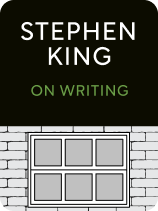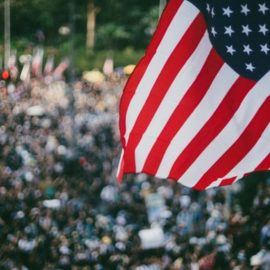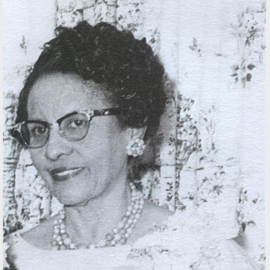

This article is an excerpt from the Shortform summary of "On Writing" by Stephen King. Shortform has the world's best summaries of books you should be reading.
Like this article? Sign up for a free trial here .
What was Stephen King’s early life like? When did he start writing, and what inspired him to write horror?
King was interested in horror from an early age. In fact, Stephen King’s early life included his attempts to become a published horror writer.
Read more about Stephen King’s early life and how he got started in writing.
Stephen King’s Early Life: King Starts Writing
In Stephen King’s early life, he began writing. He began writing when he was six. Because of several rounds of medical issues—measles, ear infections, and tonsillitis—he spent most of his time at home and was held back from finishing first grade. With plenty of free time, King devoured comic books and fiction books.
He started writing by imitating: he copied stories from comic books word for word. He showed his masterwork to his mother, who was amused. She asked if he’d come up with the stories himself. He admitted he hadn’t, and she looked disappointed. She urged him to write his own story—he could do better than the crude comic books.
The idea of creating his own stories felt like an open world of possibilities. He soon wrote a four-page story about four magic animals adventuring to help children. He showed it to his mother, who laughed while reading it and declared it was “good enough to be in a book.” This remains King’s favorite praise.
He wrote four more stories, and his mother paid him a quarter for each. That’s how King earned his first dollar as a writer.
He continued writing stories and submitting them to publications. He published his first story in an amateur horror magazine; his title, before the publisher changed it: “I Was a Teen-age Graverobber.” This one of the big achievements of Stephen King’s early life.
Good Ideas Just Appear
Stephen King doesn’t know where good story ideas come from. They just sort of appear. Sometimes they come from seeing something in front of you. Sometimes two unrelated ideas collide and create something inspired and original.
The key isn’t to sit and come up with good ideas—it’s to recognize a good idea when it does appear.
He remembers the first time he came up with a really good idea. He was around 13, and his mother was compiling trading stamps, trying to save enough to buy his sister a Christmas gift. (Shortform note: Trading stamps were an early form of loyalty program. Companies like S&H Green Stamps would print stamps, which were bought by vendors like supermarkets to give to their customers as incentives to shop. Customers would then collect these stamps, stick them in stamp booklets, and redeem them for items.)
Frustrated with not having enough stamps for the gift, his mother stuck her tongue out in exasperation. It was colored green from licking the stamps. King thought it’d be nice if you could print your own stamps. A story idea flashed in his mind. It was about a money counterfeiter who discovers he could get anything with enough stamps—even a house for his mother, costing just eleven million stamp books. This was one of the bigger ideas of Stephen King’s early life.
The counterfeiter excitedly prints millions of stamps in his basement with a press and begins fixing them to stamp books with an adhesive machine, until he discovers a problem—the glue he’s been using discolors the stamps, rendering them worthless. He has only one alternative—affix the stamps by licking, as usual. Looking around at his millions of stamps, he dejectedly gets to work licking, and licking, and licking. His lips, tongue, and teeth have already been stained pink, but he continues licking to get his mother her house.
Try, Try Again
King submitted the stamp story to Alfred Hitchcock’s Mystery Magazine, and he got a cold rejection letter telling him to use a paper clip instead of staples to bind his submission. He pinned the letter on the wall with a nail. From then on, whenever he got a rejection slip, he’d stick it onto the nail, like a stack of receipts at a diner.
By the time he was 14, he’d gotten so many rejection slips that the nail couldn’t hold up any longer. He hammered a sturdier spike into the wall and continued writing.
By the time he was 16, his rejection letters began sounding warmer. Said an editor of The Magazine of Fantasy & Science Fiction, “This isn’t for us, but it’s good. You have talent. Try again.”
Trying to Make It in Writing
Stephen King’s early life was also marked by challenges to find success in writing. After graduating from college, King continued his education to earn a teacher’s certificate, as a backup career in case his writing wouldn’t pay. This wasn’t of much use immediately—he couldn’t get a teaching job, so he worked at a laundry for $1.60 an hour. Tabitha worked at Dunkin’ Donuts.
King continued writing during his breaks at the laundry and after work. It was tough going. He’d only occasionally sell his stories, and they were on the brink of needing to accept welfare. He was mortified that he might simply be reliving his mother’s life (she, too, worked in a laundry to support her family), and thought that surely their lives should be going better.
In one instance, the family was returning from a trip when his daughter developed an ear infection and fever. They knew they needed amoxicillin but couldn’t afford it. Fortuitously, King found an envelope in their mailbox—it was a check for one of his stories, paying $500. It was the largest check he’d received for his writing to date. Relieved, he bought the medicine and treated his family to a dinner.
King soon found a job teaching English at a nearby high school. It paid $6,400 per year, which was a temporary relief. But it soon exacted a large cost on his writing energy. Between the teaching, after-school meetings, and grading homework, he was too exhausted to write. He began despairing for his future as a writer—might he become one of those disillusioned English instructors, always claiming to work on that breakthrough novel but never having the courage or perseverance to really get something real done?
Through these difficult times, his wife Tabitha was a vital source of continuous support. She never chastised him for wasting time writing stories (even horror stories sold to men’s magazines). Having someone who believed in him pulled him through.
Demons
From this triumph, King’s writing career took off. From that point on, King published roughly one to two novels per year, including The Shining in 1977, Cujo in 1981, and Misery in 1987.
But his health belied the success. He had become an alcoholic. He’d already started drinking heavily in the early 1970s, from the beginning of his marriage. When his mother died in 1974, King remembers delivering the eulogy drunk.
Beyond just liking to drink, King also bought into the myth of the genius writer/substance-abuser, in the style of Hemingway and Fitzgerald. The excuse that someone like Hemingway might use was that writers are by nature sensitive people, but being sensitive isn’t manly; alcohol dulls the sensitivity and helps the writer cope with the existential crises and lonely despair that writing brings.
By the 1980s, King began using drugs regularly—cocaine, Valium, even cough syrup and mouthwash. He tried to hide his habits, but his struggle surfaced through his writing.
- The Shining features an alcoholic former teacher and writer; King didn’t realize until later that he was writing about himself.
- Misery (written in 1985, published in 1987) shows a writer imprisoned and tormented by a psychotic fan. The writer has no choice but to indulge his kidnapper’s requests.
- The Tommyknockers (written in 1986, published in 1987) was a sci-fi horror story about humans unearthing an alien spaceship. The ship gives them genius inventive powers, but it makes them deranged and sacrifices their soul. This was his metaphor for drugs and alcohol.
Around the time he wrote The Tommyknockers, his wife staged an intervention. She gathered friends and family, dumped his drug paraphernalia from a garbage bag onto the floor, and demanded that he get better or leave the family. It was too painful watching him slowly poison himself to death.
Initially resistant (as many addicts are), he came around to it. He didn’t want to be the tormented writer in Misery, a captive of his own destructive habits. Most of all, he didn’t want to lose his family. He quit the alcohol and drugs.
King was scared that his creativity and writing energy would disappear with the alcohol, but this wasn’t the case at all. His writing wasn’t always perfect, but he began rediscovering a sober joy in his writing. Through his recovery, he never stopped writing.
Stephen king’s early life always included writing, and he soon developed a strong and prolific career.

———End of Preview———
Like what you just read? Read the rest of the world's best summary of Stephen King's "On Writing" at Shortform .
Here's what you'll find in our full On Writing summary :
- Stephen King's personal writing habits that led to superstar books like Misery and It
- How to make a story and characters feel real
- Why you should never use adverbs






